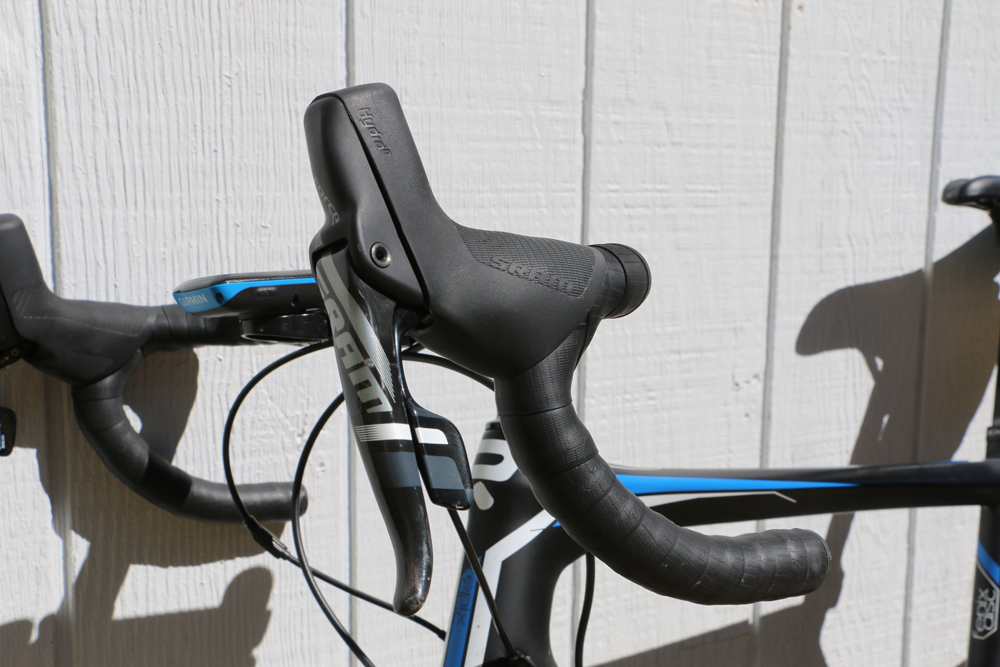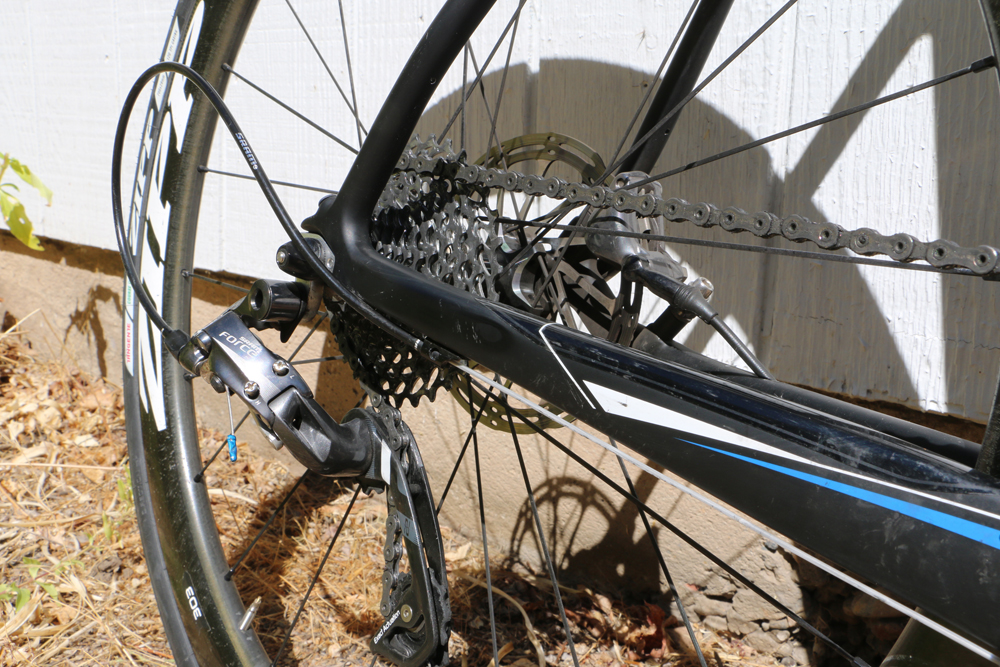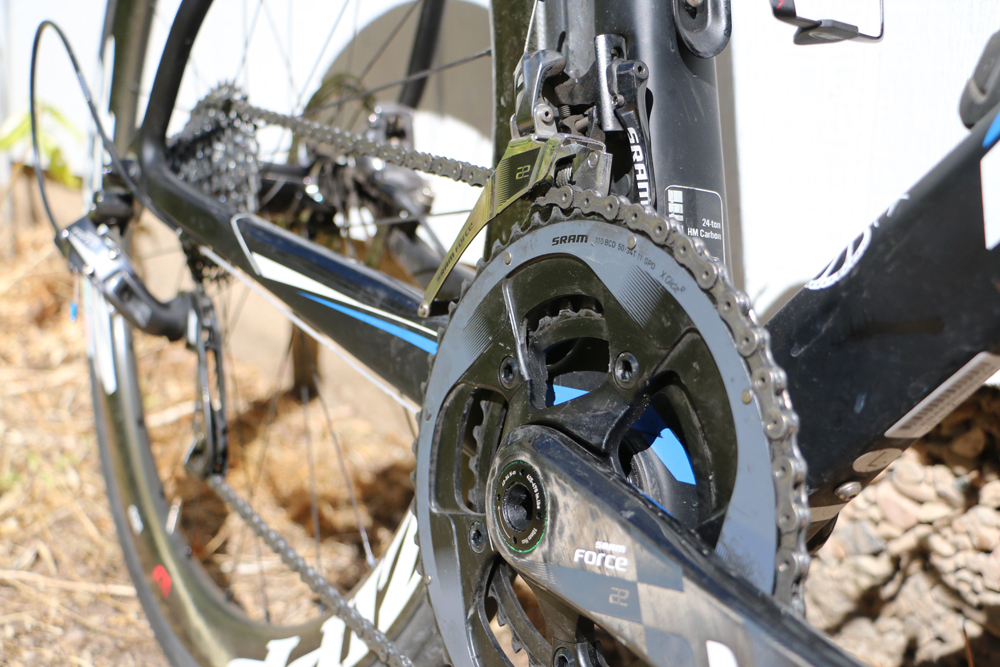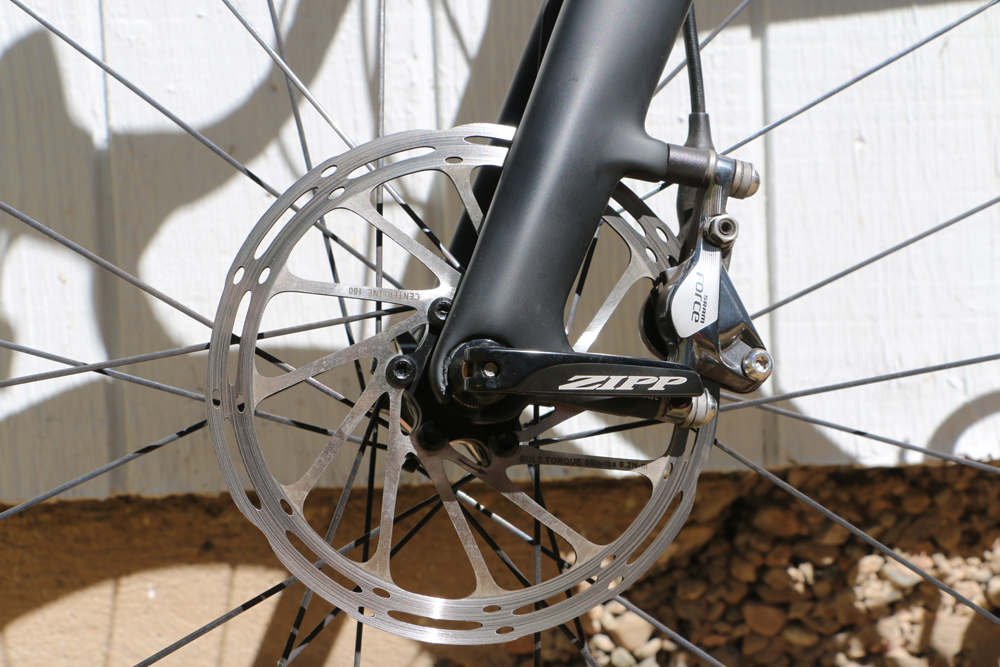By Dave Iltis – SRAM’s Force 22 road component set is a winner, especially the brakes! 22 gears are a perfect setup for riding in the West.
There are things you want to notice on your bike – beautiful scenery, other cyclists, cars, how hard the headwind is, or the next hairpin on the climb. And, there are things you don’t want to notice – like pretty much everything on your bike. Your bike should be a smoothly working, integrated machine that you don’t notice at all. SRAM Force 22 has reached that point where you don’t notice it on your bike – it’s just about perfect!

I have been lucky enough to ride Force 22 for the past year. My bike, a Ridley Fenix Disc, is set up with Force 22 throughout. The shifting is smooth and precise – move the DoubleTap levers a little to shift to a harder gear, move it a bit more to shift to an easier gear. The two actuation levels are easy to use, and result in shifting that you just don’t notice – it just works. One feature of the DoubleTap that I really like is that it’s controlled by just the inner lever while the brake lever remains solid and aligned. This gives a feeling of confidence when braking.
The drivetrain of is set up with Force 22 cranks, SRAM Force 22 mid-cage rear derailleur, an 11-32 cassette, and the Force 22 Yaw derailleur.

With the drivetrain, there are some key features that make this a great setup for the Western States. The biggest one is that with 11! cogs in the gear range of 11-32 combined with a compact 50-34 set of chainrings up front provides the range you need to not only crush it on the flats and max out speed on the descents, but also to climb the canyons and mountains that are throughout the Rockies, Wasatch, and Sierras. When I raced long ago, I may not have needed the extra gearing (but it would have been great for races like the Iron Horse, or Big Cottonwood Hill Climb), but now it allows me to sit and spin throughout most climbs (yes, I do mix it up and stand and climb too). It is a far and welcome cry from the 39-23 gearing I used to have. The 11 cogs have the following gear set-up: 11-32: 11, 12, 13, 14, 15, 17, 19, 22, 25, 28, 32. As you can see, in the smaller cogs, there is a straight block from 11-15, and smooth steps from there up to 32. For those of you wanting a tighter range, SRAM provides cassettes in 11-25, 11-26, and 11-28. These options notably provide a 16 cog for spinning on the flats. Again, the gearing is something that you just don’t notice, it just works.

The Force 22 front derailleur has ‘Yaw’ technology. This eliminates the need to trim (a small shift so that the chain doesn’t rub) the front derailleur while in the big-big chainring cog combination. Again, this a feature that you don’t notice while riding, it just works.
There is something about SRAM Force 22 that you will notice – the brakes. My bike is set up with the Force 22 HRD hydraulic disc brakes. These brakes are by far the best brakes I have used on a road bike. By far. For the last 8 years or so, I have ridden carbon wheels with rim brakes. The bottom line with the rim brake/carbon combination is that it’s hard to stop on long mountain descents, and when the road is wet. This, even with improvements in brake pads. Not so with the SRAM hydraulic disc brakes. Braking on a road bike can now be as positive and strong as on a mountain bike, where hydraulic disc brakes have been around since the mid-90’s and were fully adopted in the 2000’s. What took roadies so long to see the light? No doubt a large part of this is that the engineering that goes into creating a brake/shift/hydraulic reservoir lever is phenomenal. All of that technology needs to be packed into a very small volume. Another large part of the delay is that roadies and especially racing roadies are a cautious bunch that sometimes take awhile to adopt new technologies. Disc brakes weigh a little more, and do have a sharp rotor that some pro cyclists have expressed concern about (after a brief trial this past spring, disc brake use was halted in the pro peloton after an injury that may or may not have been caused by a rotor). Regardless of that, disc brakes are a great choice for almost all road cyclists. They have incredible stopping power in wet and dry weather, and really are only a little heavier than rim brakes.

Another bonus with the SRAM HRD brakes is that they are smooth. The actuation is similar to that of a rim brake, and they are easy to get used to. This means that when you trade up from your existing rim brake, they take almost no time to get used to. Unlike rim brakes, they are very, very powerful and take less force on the lever to slow down. All of this translates into safer and more precise descending, and to better wet weather handling.
Hopefully it is only a matter of time before hydraulic disc brakes are ubiquitous on road bikes, including those in the pro peloton. They truly are a game changer, and SRAM’s version are at the forefront. After riding these, I have no desire to go back to rim brakes. Note that if you want to switch, you will need a disc-compatible frame since they can’t be retrofitted on a frame built for rim brakes.
The brake levers are the main point of contact with your hands and your bike, and so a comfortable ergonomic fit is key. The SRAM levers deliver on that – they feel great, and again, on long rides, they are a part of your bike that you won’t notice – they just work. A couple of key features in the levers are that they have a reach adjustment, which is great for those with smaller hands. Additionally, they are easy to bleed (have your bike shop mechanic do this if you are not an expert), with the bleed valve located just under the brake hood.
SRAM Force 22 is not SRAM’s top of the line group, but it might as well be. This is an awesome setup that anyone from a pro level racer to recreational rider will benefit from using. You will find it spec’ed on many high-end and mid-range bikes. It’s also reasonably priced. All in all, I would highly recommend it, and give it five stars.








